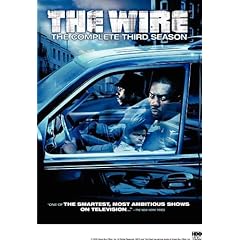Anti-aging and anti-wrinkle creams, at one time, were considered illegal by the FTC. Why are magazines filled with the ads today? Was the court, in 1944 just being paternalistic to females?
Before the Federal Trade Commission Act was passed in 1914 there was little way for consumers to really be protected unless they went through the rigors of trial. Really, it wasn't until Congress amended the mandate of the FTCA from unfair methods of competition in commerce to both unfair methods of competition and unfair or deceptive acts or practices in or affecting commerce that it really was able to protect consumers.
The FTC is an administrative body that can enforce this mandate through broad investigatory powers, adjudication within, and litigation in the court system. Therefore, if a company is engaged in some sort of deception the FTC can bring a suit against that company to force it to cease and desist.
One of the first ways this came up was in the realm of false advertising. In 1944, the Court of Appeals, Second Circuit, helped to define what was necessary for deception under the FTC in the Charles of the Ritz decision. Here was a company that marketed a cosmetic product called "Rejuvenescence Cream" and made over 1 million dollars from its sales during 1935-1939. A period of time where the Great Depression was in its worst and people were jumping out of buildings. A cream was able to make over a million in sales.
The Court agreed with the cease and desist order issued by the FTC. Using the word "Rejuvenescence" was held to deceive the reasonable person because it suggested something that was medically impossible. The FTC had experts in the medical field come in to testify this was medically impossible. The court said that the reasonable person was "ignorant, the unthinking and the credulous" of society.
Look in any of the advertising magazines today and you'll see plenty of ads for anti-wrinkle creams. In More magazine (aimed primarily at older women) has a full page Neutrogena ad that says, "Get 10 years back with Retinal Correction." How is that different from Charles of the Ritz? In Vogue magazine Estee Lauder has an ad that starts, "Can you change the destiny of your skin?" It then goes on to discuss the marvels of genetics. Finally Bazaar offers that if all of this doesn't work then "is it the right time to ask your doctor about Botox?"
What has changed in the 60 years since Charles of the Ritz? Are these ads still aimed at the ignorant and credulous? Is the FTC trying to not be paternalistic to women? I'm not sure what prompted the change but the FTC now Policy Statement Regarding Advertising that supplies companies and advertising firms concrete rules for what they can and cannot advertise. Ultimately they must have a reasonable basis for making their claims. If they don't have a reasonable basis it is a per se violation of section 5 of the FTC.
My guess is that the FTC has realized that technology has changed and it is not possible to have anti-aging creams.
Monday, August 30, 2004
A Wrinkle in FTC: What once was taboo in advertising is now reasonable
-x-


